Hey, guitarists! Are you stuck trying to figure out which guitar pedal should be your first? Don’t worry. By the end of this guide, you’ll have a clear understanding of the various types of guitar pedals and what they can do for you. We’ll talk about the main four types of guitar pedals as well as some other hot effects you should know about. You’ll also get a feel for the sound and history of each unique effect by listening to the suggested songs listed in each entry. Take a look at the table of contents to jump to any section. Otherwise, let’s dive in!
Table of Contents
Distortion
When we talk about effects pedals, the first pedal type to come to your mind is probably distortion, the most common effect for guitarists.
Distortion effects have a loud, intense, and imperfect tone as your guitar’s signal is clipped and overdriven, adding harmonics. This technique was first used in the 1940s, as guitarists pushed their amplifier gain too high accidentally, but then discovered that they liked this harsh yet emotive tone. One of the earliest known examples is a song called "Bob Wills Boogie". After that people began to imitate this imperfect, nasty tone, sometimes destroying the amp’s speaker cone on purpose to get it. While The Kinks were recording the song "You Really Got Me", they tore off the paper cone of the amps to get those warm, gritty, and fuzzy effects. to achieve that sound without destroying your amp, enter the Fuzz effect.
1.Fuzz
Fuzz sounds just like the name. It creates a fuzzy effect and its tone is very dynamic and broad. It sounds like your amplifier is reaching the breaking point. Jimi Hendrix, seemingly synonymous with the word fuzz, applied this effect in his biggest hits, "Foxy Lady" and "Purple Haze". What’s more, you can find this fuzz effect during the interlude (at around 2:20) of "One of These Nights" by The Eagles.
To help you solidify the different between fuzz and overdrive, check out "Sunshine of your Love" by Cream.

Over time, we’ve made significant improvements to the Fuzz circuit. Then, Overdrive was born.
2. Overdrive
Overdrive is used to stimulate the natural distortion tone you get when you turn an amplifier up to the breaking point, without putting your amp in so much danger of damage. It sounds more compressed and emphatic, but the clipping is soft and not so immediate. When played expressively, you can dynamically control the amount of distortion by the volume of your instrument or the dynamics you are playing with. If you listen carefully, you will hear this effect in the outro of "Another Brick in the Wall, Part Two" by Pink Floyd. You can hear the warm, expressive nature of overdrive.
Check out Joe Satriani’s "Ten Words”, where he combines Chorus with Overdrive. it is real music give you a warm hit on your deepest soul. Also check out Steve Vai’s famous song- "For the Love of God", which also expertly showcases the overdrive effect.
Most typical overdrive effects have two gain stages: one is Level (Control the level of the distorted signal at the output), another is Drive (which adjusts the amount of distortion). Often they will have a tone control for controlling the amount of high-frequency content, adding bite to the sound when up, or making it mellower when turned down.
Many Distortion pedals adopted this knob arrangement from the legendary TS-style vintage tube overdrive pedals, and so does Donner. The Donner Morpher Drive pedal features an easy-to-use three-knob control scheme: LEVEL (output volume), TONE (brightness), and GAIN (overdrive amount), which can be varied to taste for use in different scenarios. Each knob gives you a wide control range.
Donner Morpher Overdrive Pedal
Moving forward in time to the 1980s and the appearance of heavy metal music, musicians demanded more distortion and a tighter timbre to that distortion. Effect pedals equipped with diodes and transistors tuned to this sound emerge on the effects market. These are Distortion pedals.
3. Distortion
Distortion pedals are actually just one kind of distortion effect. We’ve already covered the less aggressive overdrive and fuzz above. That’s actually Distortion’s main feature: more aggressive sounds and more abundant overtones. It’s not loose or sustaining like fuzz, and not the warm soft clipping of overdrive. You can hear this Distortion effect in "Panama" by Van Halen. You will immediately be hit by the distortion effect on the power chords in the intro.
It can be easier to distinguish these three distortion effects by looking at what they do to an audio signal. Below are some pictures of what these effects do to a sine wave (guitar signals are much more harmonically complex than the pure tone sine wave, but this illustration still helps). Distortion pedals produce perfectly flattened peaks or "hard" clipping. Overdrive pedals produce "soft" tube-like distortion by compressing the sine wave without completely flattening it, and how about the Fuzz pedals? They also do hard clipping, but focus on the high end harmonics and tame the tone.

(Picture from Wikipedia)
Degree of distortion: Overdrive< Distortion< Fuzz
In modern music, it is hard to distinguish between Overdrive, Distortion, and Fuzz, partly because they are all aspects of the same family of sound. Many modern pedals can combine aspects of each, or add controls to make one sound like another.
What’s more, people often stack overdrive and distortion pedals together to get a dirtier tone. Add to that the amplifier in use and its quirks, guitarists rarely use purely one type of distortion.
You don’t need to worry too much about being able to distinguish these distortion effects too precisely, but it’s helpful to have a good basis for each so you understand what will help you to get the sound you’re after.
Time-based
Time-based effects usually include Delay and Reverb effects, sometimes also called “echo". As the name indicates, they delay the sound signal rhythmically, or to imitate an ambience. Imagine you shouting in a cave, and listening as your shout returns to you from all directions.
1. Delay
Delay pedals repeat your guitar signal rhythmically, allowing the repeats to slowly decay away. You can find this effect in Michael Jackson’s "Human nature”. The palm muted guitar part is run through a delay pedal that repeats the signal. In "Another Brick in the Wall, Part One" by Pink Floyd", you can hear the clean guitar notes and the grace notes are created by the echo effect.
The Delay effect is also used on the chords during the verse of "Every Breath You Take" by The Police and the overdriven guitar (2:20) from "With or Without You" by U2.
There are three main parameters for delay:
Effect Level: output level of the delay sound.
Feedback : how many times the delay sound is to be repeated (how many times the repeats are repeated).
Delay time: adjust the time before the delays, sometimes precisely, sometimes by feel alone.
Donner Yellow Fall Delay Guitar Effect Pedal
2. Reverb
Reverb simulates the natural echoes of real spaces, like rooms, halls, and large concert venues, mixing in your dry signal as well.
In order to emulate this natural reverberation in the physical world, springs and plates were used often in the past to get this effect. Springs can be placed inside of guitar amps, and plates are used more inside of studios as they can be large. For decades now, we have also been able to use digital technology to make more accurate, and sometimes more unusual, reverb sounds.
Let’s take a look at the song "Slow Dancing in a Burning Room" by John Mayer, which uses the spring reverb effect built into his amplifier. The first three seconds are a typical spring reverb effect.
Reverb is also an essential effect for power metal and arena rock. It really gives the music the sound of being played in an enormous venue and a larger than life feeling. Check out the studio recording of "Farewell" by Avantasia. The reverb effect coveys the solemn vibe the artists were looking for. You can also check out "The Scarecrow" also by Avantasia to hear the reverb effect used on the percussion parts.
There three primary controls for reverb pedals:
Decay: Set the duration of the reverberation.
Effect level: Control the volume of the effect.
Tone: Control the effect tone.
Donner Digital Reverb Guitar Effect Pedal
Modulation
Modulation effects modulate your guitar’s sound in various ways. Sometimes these pedals clone your guitars sound and set it slightly out of phase with the original signal, and sometimes they use oscillators to modify sound over time.
1. Chorus
Chorus pedals mimic the sound of having multiple instruments playing at once. Using similar circuitry to delay and reverb effects, chorus copies your guitar’s signal before delaying it and sometimes modifying the playback speed. This gives the impression of several guitars playing at once, each slightly out of time and tuned slightly differently. Listen to "Come as You Are" by Nirvana, to hear the typical chorus effect on the guitar part. It is rich and layered, and really cool.
Check out "Dreams " by The Cranberries, especially the chords at 3:17 to hear more of this effect.
The two main controls for chorus effects are Rate and Depth.
Rate: Adjusts how quickly the playback speed of the copied signals is modified.
Depth: Adjusts how dramatically the playback speed of the copied signals is modified.
Donner Tutti Love Chorus Guitar Effect Pedal
2. Tremolo
Tremolo is one of the earliest effects. It was originally built into amplifiers. The tremolo effect is produced by altering the amplitude of the guitar signal, like you were rolling up and down the volume on your guitar while playing. The guitar intro and interlude of "Boulevard of Broken Dreams" by Green Day uses Tremolo to great effect.
The typical parameters for Tremolo are the same as chorus: Rate, and Depth.
In this case, rate is how frequently the volume is modulated up and down, and depth is how high and low the volume is modulated.
The pictures below show the difference in effect of chorus and tremolo. The first picture shows a copy of your signal being stretched and contracted, which would be added to your original signal in a chorus pedal. The second image shows your signal volume being turned up and down over time. This is what happens in a tremolo pedal.


3. Flanger
The flanger effect is related to chorus and has a sound reminiscent of the whooshing sound of a jet plane. Your original signal is cloned, and the clones are stretched and contracted in time to give a moving, out-of-phase sound.
Flanger effects are widely used in hard rock and metal music. The guitar intro at 0:31 of "Dirty Water Dog " by Van Halen shows off the typical clean Flanger effect. And the "Ain't Talkin’Bout Love" also by Van Halen, uses the Flange effect at 2:05.
Just like Tremolo and Chorus, Flanger uses primarily two parameters: Rate and Depth.
Rate: How quickly the playback speed of the cloned signal is modified.
Depth: How dramatically the playback speed of the cloned signal is modified.
Flanger effects can easily be confused for Phaser effects, and for good reason.
4. Phase
The phaser effect is also one of the earliest effects, approximating the sound of a Flanger or a Chorus effect, but before the necessary delay circuits were invented.
Rather than creating delayed copies of the original signal and changing their playback speed, the phaser duplicates your guitar signal, but also changes the phase of the duplicate so that two identical signals play side by side, but just offset enough to create an interesting sound.
For example, check out the guitar solo from the interlude of "Time" by Pink Floyd, which also uses distortion. At 4:50, you will can hear the phaser effect. "Eruption" by Van Halen” uses the phaser effect on the whole song.
Phase pedals usually have three controls:
1.Rate: Adjusts the speed of the modulation of the out-of-phase signal.
2.Depth: Adjusts the how much the out-of-phase signal is modified.
3.Resonance: Adjusts the feedback of the out-of-phase signal
Filter
The Wah-wah effect is the most obvious and recognizable example of a Filter, but there are others. Equalizers vary the relative volume of various frequency ranges. Auto-wah, sometimes called an envelope filter, changes a filter’s frequency and volume based on your playing. Then there is the Talk Box, which allows you to filter the sound with your mouth to create wild vocal effects.
1. Wah-wah
The Wah effect uses an equalizer circuit, and boosts certain frequencies of the guitar, while filtering out others, depending on where you are in the travel of the pedal. Pressing up and down on the pedal turns a knob inside of it, varying this frequency boost.
You can hear this Wah effect (along with a healthy dose of distortion) on "Vodoo Child" by Jimi Hendrix. The Wah-wah sound before 0:30 is pretty dramatic.
Donner Wah Volume Effect Guitar Pedal
2. Talk box
The talk box is a slightly unusual pedal that uses your mouth as the filter. It has a speaker inside the pedal and a long tub that you put inside your mouth. This puts your guitar signal into your mouth, where you can move your tongue and lips to approximate vocal sounds with the guitar signal. This effects usually requires a microphone to pick up the sound coming from your mouth. You can hear this effect on "It’s my life" by Bon Jovi during the interlude after 2:10.
3. Auto-wah(Envelope Filter)
As the name, this pedal can adjust the wah-wah effect automatically using the volume of your playing. When you play louder, the effect is more dramatic, and when you play softly, the filter hardly moves. This can lead to really dynamic playing. A lot of bass players like this effect on Funk music to sound like Bootsy Collins.
Donner Dynamic Wah Guitar Effect Pedal
Dynamics
1. Compressor
A professional guitarist should have one good compressor pedal at the start of their signal chain. Compressor is used to lower the volume of louder notes and raise the volume of the softer notes. It can even out your playing and make it sound more consistent.
There are usually two important features for compressor pedals: Attack and Release.
Attack: Adjusts how quickly the compressor responds to playing (letting initial peaks leak through to keep a dynamic feeling, or not)
Release: Adjusts how quickly the pedal returns to normal after a volume spike.
Compressors are used everywhere and in just about every recording you’ve ever heard. Often times their effect is subtle and that is intentional. To hear a sample, check out the guitar riff (1:46 and 3:06) in the song "Thriller " by Michael Jackson.
Others effects
1. Loopers
If you’ve ever seen a guitarist play a part, and then play over that part as it repeats, then you’ve seen a looper pedal in action. You can see this in "Shape of You" by Ed Sheeran.
Looper pedals are simple to understand. Press one foot switch to begin recording, press it again, or sometimes a different switch, to begin playing back what you played. You are then free to play over the top, switch instruments, or add other layers.
Looper pedals have been developing quickly in recent years. Some can record multiple tracks. Some can record fo minutes to hours. Some allow you to add drums and other parts to be your own band.
Donner Triple Looper Guitar Pedal
Donner Circle Looper Guitar Effect Pedal
2. Tuner
This pedal is pretty self-explanatory. You plug into it, play your open strings, and tune your guitar based on the feedback. It can cut your volume to the rest of your effects so no one has to hear you tune up. Having some way to tune is vital for any musician.

What Guitar Pedals Should I Buy First As a Beginner?
There is no rule as to which pedal you should buy first, or in what order you should buy them. It helps to know what sounds you like and how they are made so you can pick up pedals that give you similar sounds. Remember that pedals can make your performances sound more interesting, more dynamic, and sometimes just better, but they can also make your mistakes more obvious. Set up your signal chain with care, and make sure to practice.
 Ir directamente al contenido
Ir directamente al contenido

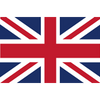
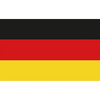
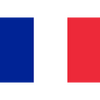
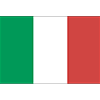
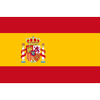
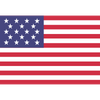
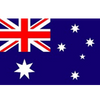
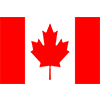

















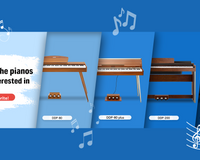
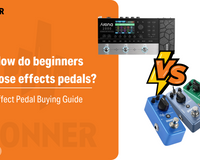
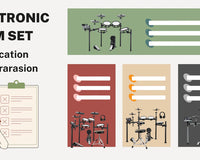
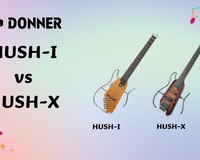
1 comentario
ERIC
I bought a Donner Noise Killer Pedal yesterday.. Quite simply a Brilliant small device that does exactly what its meant to do.. Kill unwanted noise.. Easy to use… Absolute bargain for the money.. Thanks Donner!